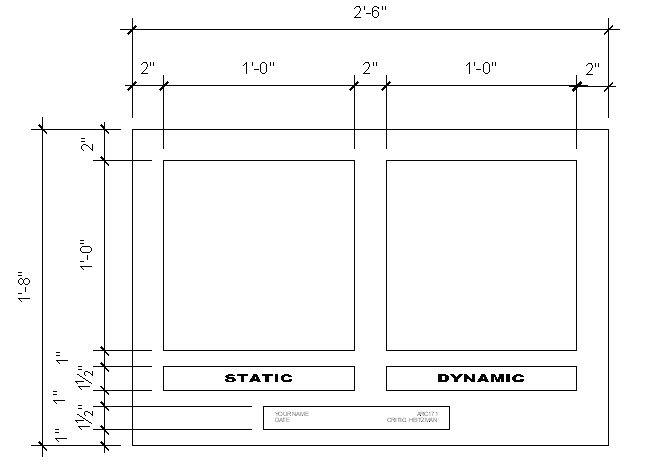
movement
"Movement" can be used as a design tool. It can help to generate a
multitude of design solutions that can then be selected from to choose the best
or most appropriate for the problem. "Movement" in architectural design
is achieved through the use of point, line, shape, form, or space in such a
way to make one's eye want to travel along the "lines" created by
the desired movement. A good analogy would be the vertical lines created in
the facade design of the Standard Oil Building in Chicago, which create a definite
upward movement to the building and make it appear taller than it really is.
The building's major characteristic, its great height, is therefore supported
and emphasized through the use of "movement" in the composition of
the building. An architect may also choose to design with movement in such a
way as to lessen the impact of the building's main direction, or create a counterpoint
to it. This is seen in the design of the facade of the Associates Building in
Chicago (the building with the sloped top on Michigan Avenue). In this building,
the windows are designed to create a horizontal banding around the tall building,
thereby reducing the vertical thrust. Architectural movement is the simplest
and perhaps the most widely used of all of the compositional tools. It can be
either static, that is, tending to make one's eye rest at a certain point, or
it can be dynamic, taking one's eye in a certain direction. Dynamic movement
can be further classified into the following types:
Unidirectional (appearing to move in a single direction)
Reciprocating (appearing to move back and forth in opposite directions)
Circular (appearing to revolve around a point)
Spiral (appearing to move in one direction but revolving around a point in a
circle at the same time)
Multidirectional (appearing to move in several directions at the same time)
Part 1: Physical movement of everyday objects can, by analogy, be expressed in visual terms. The following is a list of common dynamic movements of different types. Select twelve movements from this list and express each of these movements using a simple geometric diagram. Explain which of the various types of dynamic movement they represent.
Sliding a book across a
table
Dribbling a basketball while standing still
An echo
A bullet leaving a rifled gun barrel
A fly fisherman casting his line
A kangaroo hopping in a straight line
Zipping up a zipper
The head of a diver doing a double somersault off of the high dive
Flipping a coin in the air
A dancer doing the twist
Breaking a rack of balls on a pool table
A quarterback throwing a long pass to a receiver
A car driving completely around the block
The movement of a butterfly going from flower to flower
Swinging a golf club
A stone skipping across a lake
The moon revolving around the earth which in turn is revolving around the sun
Throwing a knuckle ball
Make one neat freehand black "razor point" and Sign Pen sketch on one sheet of white 11" x 17" paper. Divide paper into 12 equal squares and place one small diagram in each square. Label the type of movement each represents under it. Reorganize the movement types into like groups so that all unidirectional, all reciprocating, all circular, all spiral, and all multidirectional movement types will be close to one another in the diagrams.
Part 2: Neatly build 12 identical houses in Bristol board, balsa or bass wood. Size of houses: 50 feet long x 25 feet wide x 25 feet high to peak of 12 in 12 gable roof. Scale is 1” = 50’-0”. Paint one house bright red. Arrange houses along an axis or axes to create a composition of a building site which gives a visual image of dynamic movement. Accelerate or decelerate movement along this axis. Glue these houses to a 12" x 12" piece of black foam core. Compose the board with the title, etc., located in such a way to enhance the design.
Part 3: Repeat part 2 above using the same media, create a composition of a building site which gives an image of static movement.
Mount both 12” x 12” models on one piece of white foam core, like this:
